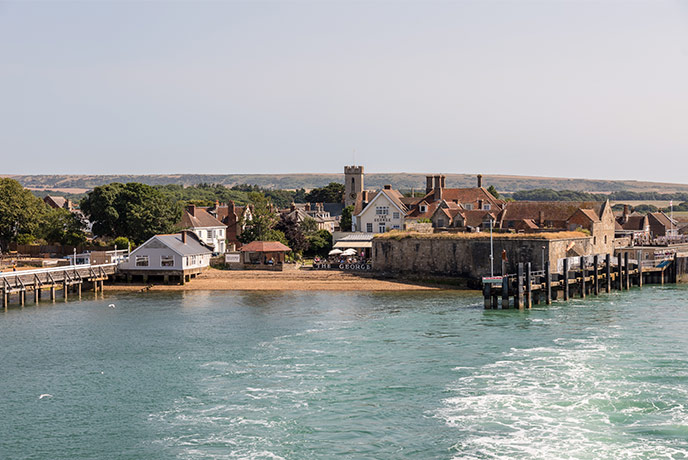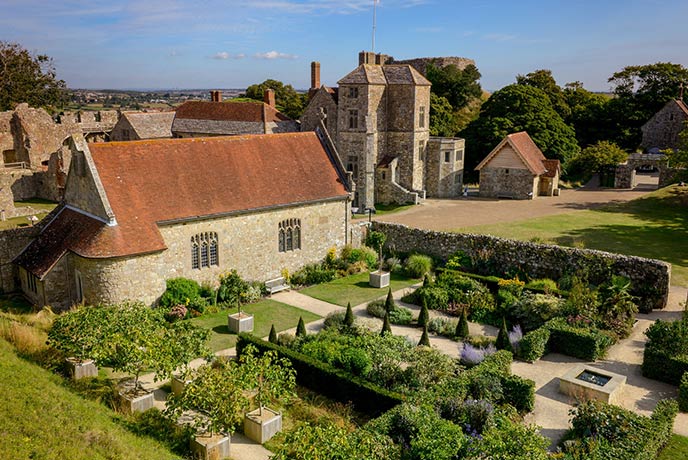The Isle of Wight’s architecture is as varied as its landscape with castellated Gothic buildings living alongside graceful Italian designs. Several are open to visitors who can discover their hidden histories.
Osborne House is the most famous of the Isle of Wight’s stately homes. Queen Victoria’s holiday home by the sea was gifted to the state after her death in 1901. Today, it welcomes thousands to admire the grand house and grounds which once extended to 2000 acres.
Explorers who look a little further will find scandalous tales amongst the ruins of Appuldurcombe House, royal weddings and funerals at St Mildred’s Church and Victorian celebrities living it up in the West Wight.
Osborne, East Cowes
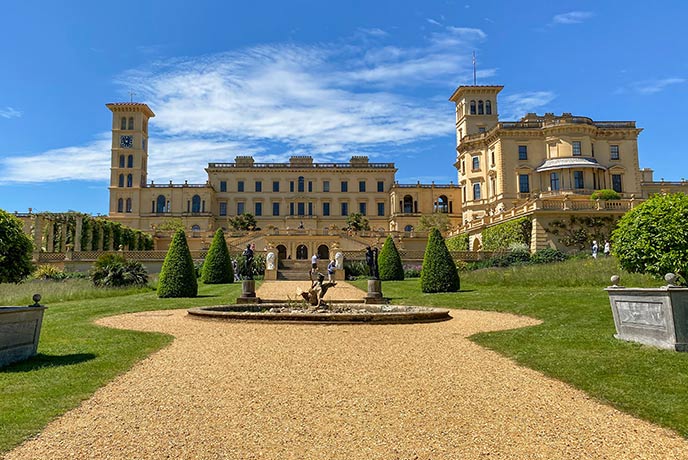
Osborne is – without question – the most famous and prestigious of the Isle of Wight’s stately homes. Others can argue that they have a longer history or more intricate architecture but none can claim such a deep connection with British royalty.
The palazzo style masterpiece took the place of a relatively grand home when it was built in the mid 19th century. Prince Albert helped draw up the plans, along with Thomas Cubitt who had a role in the designs for Buckingham Palace.
From the house, the royals could sit in their holiday home and admire their private beach with views of the Solent. Osborne Bay was closed for many years, but reopened to the public a decade ago after being exquisitely restored - complete with an ice cream stall for that all-important holiday treat! The Queen’s mobile bathing machine is worth the walk alone! Also within the grounds is a Swiss Cottage built as a playhouse for the royal children from which they learnt how to grow their own vegetables alongside one of the most beautiful gardens on the Isle of Wight.
There are lots of things to see and do within the house; visitors can see the Queen’s bedroom where she died in 1901, along with the royal nurseries which have been restored and recreated by English Heritage. The Durbar Wing is a highlight for many. It was added in the 1890s by the father of Rudyard Kipling as a grand space for entertaining guests from around the world. Its intricate designs have an Indian theme to reflect the Queen’s role as the Empress of India.
Osborne was originally intended as an occasional escape from the noise and hubbub of London. Once you’ve visited you will get a real understanding of why Queen Victoria spent much of her time on the graceful estate following Prince Albert’s death in 1961.
Appuldurcombe House, Wroxall
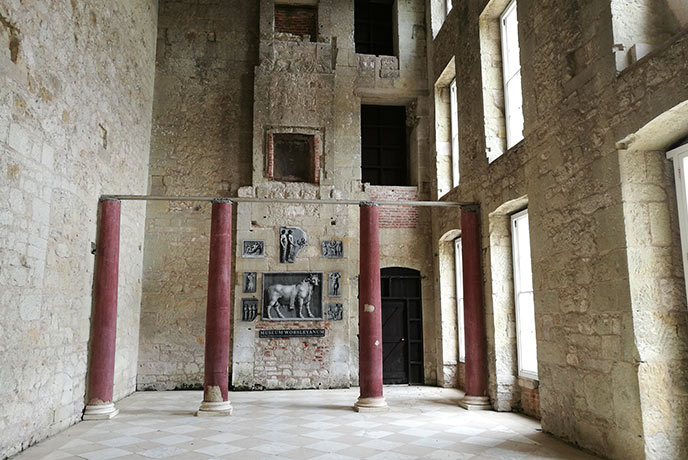
Appuldurcombe delivers a double-sided architectural fascination and a whiff of Georgian scandal. It is part ruin, part stately home with both sides offering a glimpse into a once-grand building.
From the front, Appuldurcombe House remains one of the country’s finest examples of English Baroque architecture. Its ornate wings are reflected in the circular pond and fountain, and the gardens were designed by ‘Capability’ Brown which only adds to the appeal. You can enjoy the views across the South Wight from throughout the site.
However, from behind it is a crumbling shell with incomplete staircases, uneven walls and abandoned fireplaces. Much of the damage to the roof and windows was done by a Luftwaffe pilot who dropped his final mine onto nearby fields in 1943.
The house’s history is one of Georgian scandal involving Sir Richard Worsley, who owned Appuldurcombe and Seymour Fleming. The couple married in 1776 but affairs between Seymour Fleming and an aristocratic friend of Sir Richard eventually led to the courts.
Every scandalous detail was studied by journalists of the day and soon published into a tell-all bestseller. Stories emerged of Sir Richard encouraging the very affair that he had taken legal action against! He was awarded a single shilling by the unimpressed judge. Rumour has it that George Washington was one of many who owned a copy of the sensational tale.
Farringford House, Freshwater
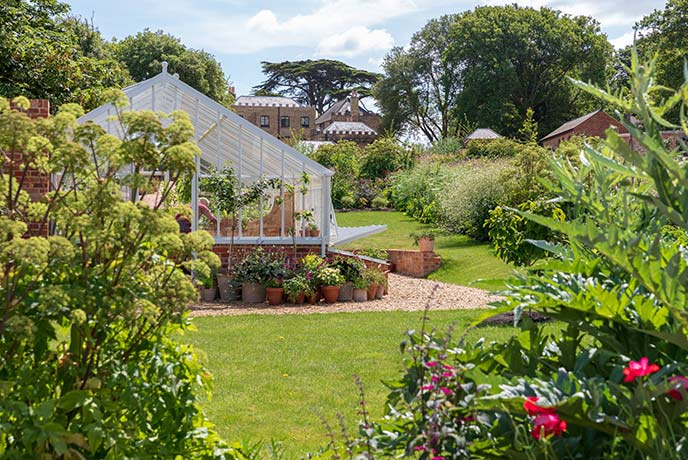
Whilst Queen Victoria fell in love with Osborne in the North Wight, her Poet Laureate’s heart belonged to the West Wight. Farringford House was the former home of Alfred, Lord Tennyson for almost 40 years before his death in 1892.
Tennyson’s presence brought a steady stream of artists, poets and authors to the house including Charles Dodgson (who wrote under the pen name of Lewis Carroll) and Edward Lear who was most famous for writing The Owl and the Pussycat.
Most days, Tennyson could be found walking to the top of the downs near his home and admiring the views towards Freshwater Bay in one direction and Dorset in the other. The air on the downs, he said, was worth ‘sixpence a pint’. After his death, a huge granite cross was erected on the peak and it became known as Tennyson Down. The short walk is one of the prettiest in the West Wight.
The house spent much of the 20th Century as a hotel before undergoing a restoration to make it much closer to the way it was in Tennyson’s day. It re-opened to the public in 2017, including its gorgeous gardens and grounds which are based on Tennyson’s designs. The architecture of the house is a mix of Georgian architecture with flourishes of Gothic design including castellated parapets.
Visitors today can take a pre-booked tour of the house and the gardens. You can see a live stream of nearby Freshwater Bay from our webcam, which is based at the lifeboat station. Pop into Freshwater after your visit for some delicious vegan fare at the fabulous Freshwater Coffee House, one of the many great vegan eateries on the Island.
Dimbola Museum and Galleries, Freshwater Bay
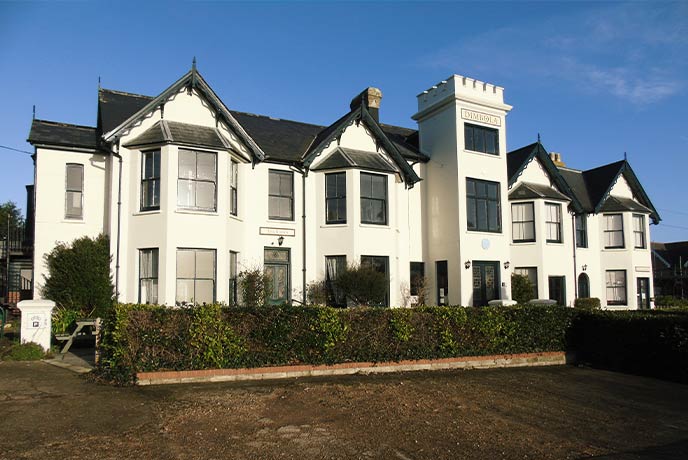
Tennyson’s great friend in Freshwater was Julia Margaret Cameron, who was another Victorian artist who took up residence in the West Wight. She made Dimbola Lodge her home and studio by building a tower between two adjacent houses.
Julia Margaret Cameron’s medium was photography and she soon gained attention for her portrait work which was more artistic than other photographers of the day. Some credit her with producing the first ever close up photograph. Her career included capturing the likes of Charles Darwin and astronomer William Herschel. You may have seen her portrait of Darwin, which featured on the rear of the ten pound note for many years.
Visitors to Dimbola Lodge can see Julia Margaret Cameron’s finest work and equipment in one part of the house. The Lodge also offers views down to the bay and a tearooms serving coffee and cake. Dimbola is a great place to stop whilst enjoying our Between Three Bays walk in the West Wight.
Allow time for Dimbola’s exhibition about the Isle of Wight Festival of 1970 which took place just down the road in Afton. Some estimates say that 600,000 people enjoyed a weekend of exuberance and outstanding music from The Doors, Joni Mitchell and The Who. It was also the final UK performance for Jimi Hendrix, who is remembered with a statue at Dimbola, surrounded by a ‘purple haze’ of lavender.
The 1970 festival caused such a furore with some locals that large gatherings were banned on the Island for the next 32 years. In 2002, the Isle of Wight Festival was finally revived and relocated to Newport.
Quarr Abbey, Fishbourne
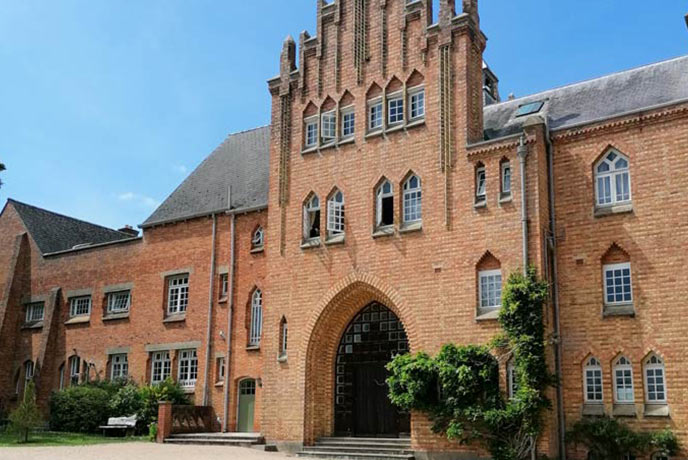
The ferry provides the first glimpse of Quarr Abbey for many visitors to the Isle of Wight. This early 20th century building is close to the Fishbourne terminal and has roots going back around 900 years when the original Abbey was built.
The Abbey of Quarr was dismantled under instruction from Henry VIII with much of the stonework being relocated to Yarmouth Castle. The more modern building was designed by a Benedictine monk called Paul Bellot who trained in Paris. He was tasked with constructing a home for a group of French monks who were looking for somewhere to live on the Isle of Wight.
Architectural highlights include the arches, windows and tall Sanctuary Tower made entirely from rough Belgian bricks. Many locals were unconvinced that such a tall brick-built tower would stay standing!
Today, Quarr Abbey remains home to a group of Benedictine Monks and it provides a fascinating insight into their daily lives. Typically, this includes seven services a day where the monks offer prayers and praise as well as working on the land. Visitors can take a guided tour, visit the Abbey’s famous pigs (and occasionally piglets!), take a walk through the nature trail or pop into the café or farm shop.
Carisbrooke Priory, Newport
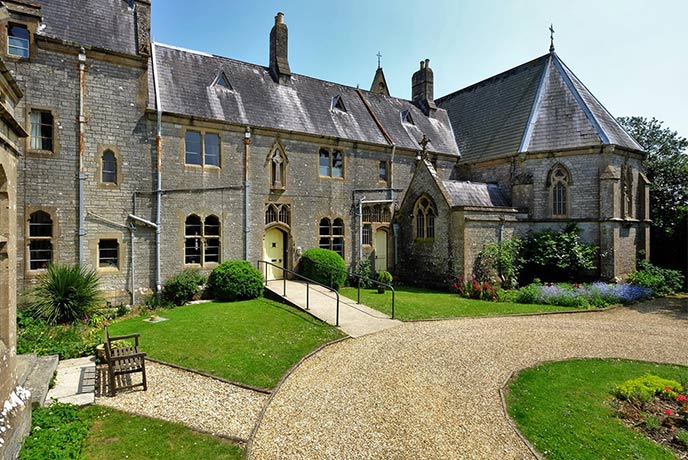
Carisbrooke Priory and Quarr Abbey share much in common, with a history of private prayer over many decades. For 130 years, Carisbrooke Priory was home to Dominican Nuns, but in the 1990s it became a Christian house of prayer which is open to all and free to visit.
The Gothic building is mid-Victorian with an imposing castellated tower, cloisters surrounding a courtyard garden, a network of cellars, dozens of former bedrooms and a chapel which is still used for regular worship. The gardens extend to two acres with a mix of allotments and orchards that are cared for by volunteers.
The Grade II listed building was designed by architect Gilbert Blount, who also worked on the Thames Tunnel alongside Isambard Kingdom Brunel.
Carisbrooke Priory is mostly run by volunteers, so check opening times before you visit the tearooms. It’s just over the road from one side of Carisbrooke Castle, so why not bolster your historic day out with a tour of another of the island’s historic wonders.
St Mildred’s Church, Whippingham

Queen Victoria regularly worshipped at St Mildred’s Church which is a lovely spot to drop in on if you don’t have time for a full tour of Osborne. The two buildings are just a mile apart and the churchyard is blessed with views of the River Medina.
The chancel was built in the 1850s, to replace one designed by famed architect John Nash. He gained much praise for his work designing Buckingham Palace, Marble Arch and Brighton’s Royal Pavilion. The new church was much grander and built at the Queen’s request, with Prince Albert thought to have been involved in the design.
Visitors can see many signs of the church’s special role in royal life. Queen Victoria’s youngest daughter – Princess Beatrice – was married at St Mildred’s in 1885. Sixty years later, her body was buried in a tomb at the church, along with her husband, Prince Henry of Battenberg. Another memorial remembers Victoria’s grandson, Alexander Mountbatten, 1st Marquess of Carisbrooke.
St Agnes Church, Freshwater
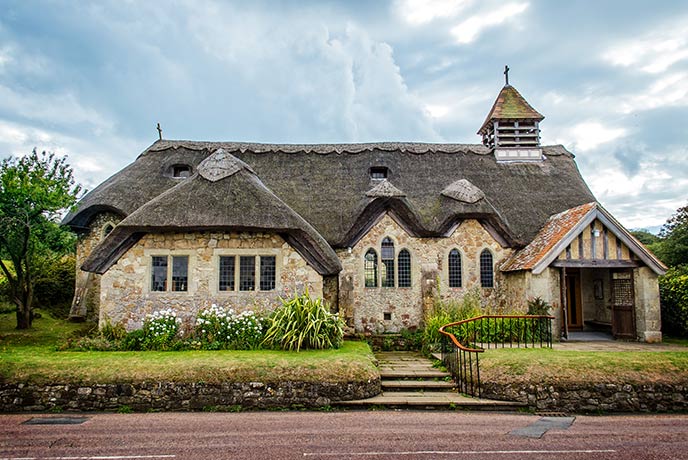
The Isle of Wight is home to many ancient churches, some of which date back hundreds of years. Notable mentions are deserved for St Olave's Church in Gatcombe and St Lawrence Old Church which both date back to the 13th century. Suitably-titled Old St Boniface Church in Bonchurch is another impressive building which was partly built in the 11th century.
However, the more modern church of St Agnes in Freshwater is worth a visit if you are also stopping off at Dimbola Lodge or Farringford. It remains the Isle of Wight’s only thatched church and has several ties to celebrated characters who have lived in the village over the years.
The land for St Agnes was donated by Alfred, Lord Tennyson’s son in the early 20th century whilst the stonework came from the former home of Robert Hooke. He was a renowned scientist and was the first person to discover a living cell.
The interior of the church has its own quirks with carvings completed by a wartime curate and photo-worthy wooden beams supporting the roof.
The popular Isle of Wight eatery, The Piano Café is just over the road for some post-exploring refreshments.
Ready for your historic tour of the Isle of Wight? For somewhere sensational to stay, check out our collection of cottages across the island.



